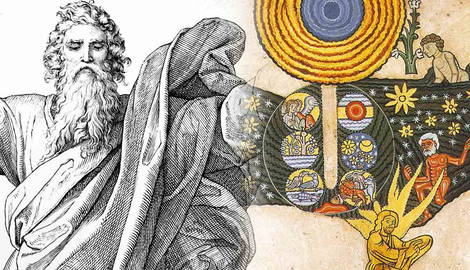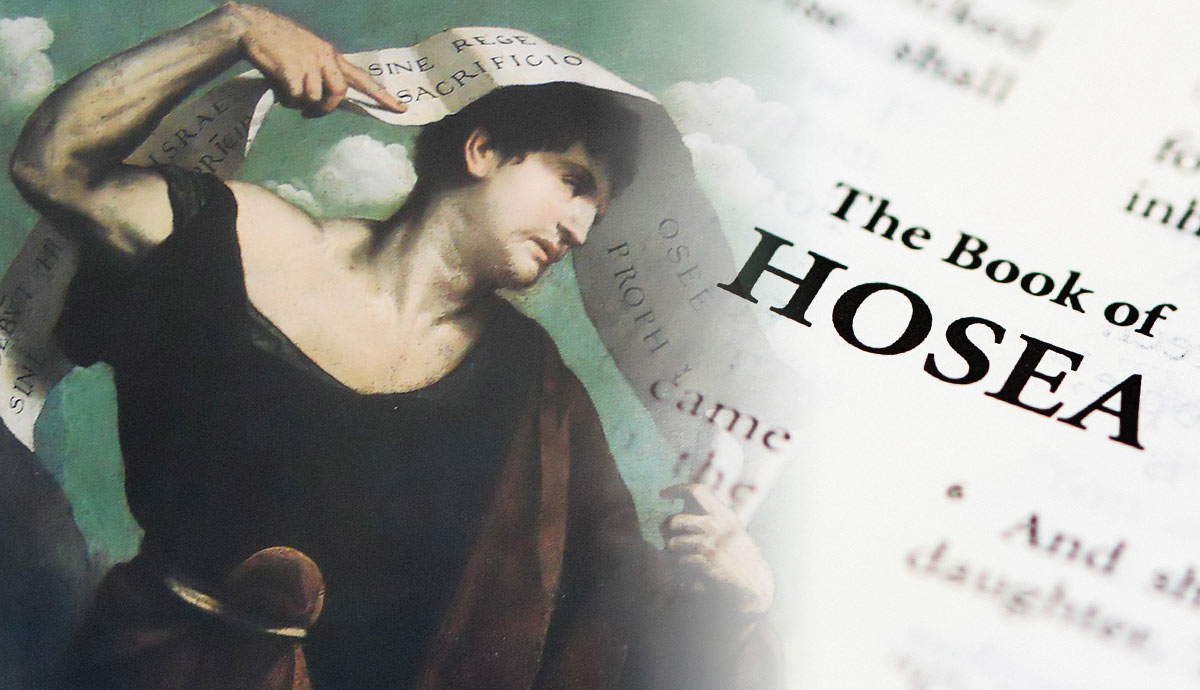
Most ancient creation narratives are similar. The protagonists have distinct traits and capabilities. The stories are full of unique fascinating details. Yet they all have one thing in common. All depict acts of incredible violence, which include destruction, murder, mutilation, and rape, and most often a combination of those. The biblical narrative doesn’t include any of that. In Genesis, God uses his Word (logos) and creates the world with immense love and care.
The other difference is the purpose of humans. In many mythologies, humans were made to serve the gods. In Genesis, God gives the first humans the whole of creation to rule. An analysis of all mythologies in the world is obviously out of the scope of this article, so we will focus on three important ones: the Babylonian, Greek, and Norse creation myths.
The Babylonian Creation Myth: Enuma Elish

The Babylonian creation narrative is written in the epic Enuma Elish. In a nutshell, it goes like this: A god named Marduk fought a monster, Tiamat. He won and made the world from the pieces of her body.
A detailed overview reveals even more fascinating elements. The universe starts with just Apsu (freshwater) and Tiamat (saltwater). Their waters mix, creating the first gods. Since they are just kids, they are noisy, and they disturb their parents. Apsu regrets having them and decides to kill them all.
One of the young gods, Ea, finds out about Apsu’s plan. He casts a spell on Apsu, putting him to sleep, and then kills him. Then he builds his home on Apsu’s body.
But the most important deity in this pantheon isn’t Ea. It is his son, Marduk. He is strong, with four eyes, and four ears, and he breathes fire. Other gods are not happy with the appearance of such a powerful deity, and they start complaining to Tiamat. She then gives birth to several fearsome creatures, dragons and snakes with venom in their bloodstream. An entire army of Tiamat’s monster children is led by her new husband, Kingu.

Tiamat gives Kingu all the power, and other gods now feel threatened. Ea and some other gods try to talk to Tiamat but have no success. Eventually, Marduk says he will defeat Kingu and Tiamat, but under one condition: he will become the chief god, above everyone else. The gods agree and get drunk.
The rest of the narrative contains graphical details about the way Tiamat’s body was sliced, which we can omit. Marduk is now the master of the universe, which he creates from the various parts of Tiamat’s body.
Eventually, Marduk decides to create humans. They are made from the blood of Kingu, Tiamat’s second husband, who led her army. Humanity’s purpose is to serve the gods, relieving them of labor. The epic concludes with the gods celebrating Marduk’s victory and praising him with 50 names, which is a special privilege. They build Babylon, his city, and a temple in his honor.
The Greek Creation Myth: Theogony

Hesiod’s Theogony provides a comprehensive account of the origins of the gods and the world in Greek mythology. This narrative is just as violent as Enuma Elish, but there is one interesting difference. When humans were created, it made Zeus, the chief god, very angry.
In the beginning, there was only Chaos, a vast and empty void. The first being emerged from this nothingness. They were Gaia (the Earth), Tartarus (the dark abyss below the Earth), and Eros (the embodiment of love and attraction). Gaia produced Uranus (the Sky) to cover herself as well as the Mountains and Pontus (the Sea).
Uranus became Gaia’s consort, and together they birthed the Titans, the Cyclopes, and the Hecatoncheires (giants with a hundred hands). However, Uranus was a fearful and cruel father. He despised the Cyclopes and the Hecatoncheires for their monstrous appearance and imprisoned them within the Earth, causing immense pain to Gaia.
Distressed by her children’s suffering, Gaia crafted a great adamantine sickle and conspired with her children to overthrow Uranus. Cronus, the youngest Titan, agreed to his mother’s plan. He ambushed Uranus and castrated him with the sickle, casting his genitals into the sea. From the drops of blood that fell onto the earth, new beings arose, including the Furies (goddesses of vengeance), the Giants, and the Meliae (ash tree nymphs). One legend even says that Aphrodite, the goddess of love and beauty, was born from the sea foam where Uranus’s genitals fell.

Cronus took the throne as the new ruler of the cosmos, but he became paranoid, remembering a prophecy that he too would be overthrown by his child. To prevent this, he swallowed each of his children with Rhea as soon as they were born. Rhea, distressed by the loss of her children, devised a plan to save her youngest, Zeus. When Zeus was born, Rhea hid him away, giving Cronus a stone wrapped in swaddling clothes to swallow instead.
Zeus grew up in secret, and when he reached adulthood, he sought to rescue his siblings and challenge Cronus. With the help of Gaia, Metis (an Oceanid), and others, Zeus forced Cronus to regurgitate his swallowed children. This act freed Demeter, Hera, Hestia, Hades, and Poseidon.
That moment was the beginning of the Titanomachy, the war between the younger Olympian gods, led by Zeus, and the older Titans, led by Cronus. The war raged for ten years, ending with the victory of the Olympians. The defeated Titans were imprisoned in Tartarus, and Zeus, along with his siblings, established a new order of gods, with Zeus as the supreme ruler.
There are various myths about the creation of humans in Greek mythology, one of which involves the Titan Prometheus. Unlike other Titans, Prometheus was smart enough to choose Zeus’ side in the Titanomachy. He was spared then, but when he created humans from clay and gave them fire, Zeus punished him.
Ancient Greek mythology is complex, as its various elements originated from various cultures. As a result, there are also at least two more versions of the creation myth, but they are just as violent as the one written by Hesiod.
The Norse Creation Myth: The Prose Edda

The Norse creation myth is just as gruesome as the Greek and Babylonian ones. The gods Odin, Vili, and Ve killed the primordial being, Ymir, and created the world from his body.
The main source for the Norse creation myth, including the stories of Ymir, the formation of the world from his body, and the creation of the first humans, is primarily found in the Prose Edda and the Poetic Edda. These medieval Icelandic texts are key sources for much of what we know about Norse mythology today. The Prose Edda, written by Snorri Sturluson in the 13th century, and the Poetic Edda, a collection of older Norse poems that Snorri likely drew upon, together contain many of the mythological stories and characters that are central to Norse mythology.
According to Norse cosmology, in the very beginning, there were two realms: Niflheim, full of ice and cold, and Muspelheim, full of fire and heat. When the ice from Niflheim met the fire from Muspelheim in the void between them, it created water droplets that formed the first being, Ymir, a giant.
Ymir was not a god but a primeval being who produced other giants by sweating them out. As Ymir slept, more giants were born from his sweat. One of these giants, along with a cow named Audhumla that was formed from the melting ice, fed Ymir. Audhumla, by licking the salty ice blocks, also created Buri, the first of the Aesir tribe of gods.

Buri had a son named Bor, who married Bestla, a giantess. They had three sons: Odin, Vili, and Ve. These three gods decided to create the world from Ymir’s body. They killed Ymir and from his body parts, they crafted the world: his flesh became the earth, his blood the seas and rivers, his skull the sky, his bones the mountains, and his hair the trees. The maggots from Ymir’s flesh turned into dwarves, who were then given intellect and human-like forms.
The gods also created the first humans, Ask and Embla, from two tree trunks, and gave them Midgard (the middle realm) to live in. The creation of the world established the foundation for the nine realms, all connected by the world tree, Yggdrasil.
The Judeo-Christian Creation Narrative: The Book of Genesis

The Genesis creation narrative presents a fundamentally different worldview and theological perspective compared to many other ancient mythologies, emphasizing a monotheistic and orderly universe brought into being by a benevolent deity, in contrast to the polytheistic and conflict-ridden cosmogonies found in other cultural traditions.
The Genesis account presents creation as a deliberate, orderly, and purposeful act by a single, sovereign God. The narrative is characterized by a series of spoken commands (“And God said…”), followed by their fulfillment and God’s approval of the created order as “good” or “very good” (Genesis 1:4, 10, 12, 18, 21, 25, 31). There is no indication of conflict, rivalry, or violence in the creation process within the Genesis narrative.

There is unity and harmony in the act of creation, with the Spirit of God present over the waters (Genesis 1:2) and later references in the Christian New Testament interpreting Jesus (referred to as the Word or Logos in John 1:1-3) as actively involved in creation, suggesting a cooperative effort within the God the Father.
In the beginning, everything was empty. Darkness was everywhere. God said, “Let there be light.” And light appeared. God made a space to separate the water above from water below. He called the space “sky.” He gathered water in one place, making dry land appear. He named the land “earth” and the water “seas.”
God spoke, and the earth grew plants, trees, and flowers. Each plant had seeds to make more plants. God created two great lights. The larger one ruled the day, and the smaller one ruled the night. He also made stars. Next, God filled the water with fish and the sky with birds. He blessed them to multiply. Then, God made animals. Livestock, creatures that crawl, and wild animals. Each kind could have babies.

God decided to make humans. He made them like himself. They could rule over fish, birds, and every living thing. God made a man and a woman. He blessed them to have children and take care of the earth.
After each creation, God saw it was good. When everything was made, he saw it was very good. On the seventh day, God rested. He had finished his work. He blessed the seventh day and made it special.
The orderly and purposeful creation steps in Genesis highlight the care and intentionality behind each act, contrasted with the chaotic and often violent origins in various mythologies. Another Biblical text, The Gospel of John, gives an additional perspective on Genesis. It explicitly connects Jesus to creation, stating, “In the beginning was the Word, and the Word was with God, and the Word was God. He was in the beginning with God. All things were made through him, and without him was not anything made that was made” (John 1:1-3). This passage identifies Jesus (the Word) as an active agent in creation, present with God from the beginning. Here we see the Father and Son working in unison — an image not seen in other ancient mythologies.










